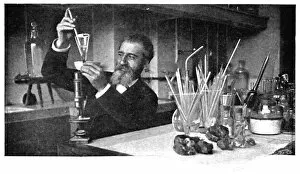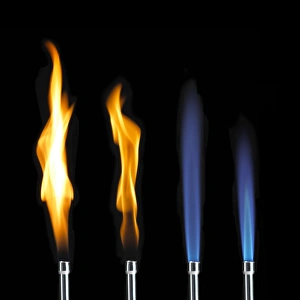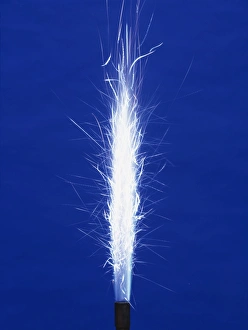Bunsen Burner Collection
The Bunsen Burner
All Professionally Made to Order for Quick Shipping
The Bunsen Burner: A Timeless Tool in the World of Chemistry From Sir Robert Ball captivating young minds at the Royal Institution to the enchanting Bruleur de Bunsen engraving, the legacy of this iconic laboratory apparatus continues to burn brightly. The Chemistry Set and Microscope litho from 1948 takes us back to a time when budding scientists explored their curiosity with this trusty companion. Robert Wilhelm Bunsen, the brilliant German chemist of the 19th century, forever etched his name in scientific history with his invention. In a stunning photograph from 1900, we catch a glimpse of him as he delves into his groundbreaking experiments. Henri Moissan, another luminary in chemistry, also embraced its power around c1900. The spectroscopic apparatus used by Bunsen and Gustav Robert Kirchhoff in c1895 stands as a testament to their pioneering work on emission spectra. An artist's depiction from the 1850s showcases Robert Bunsen himself amidst his scientific pursuits - an emblematic figure who revolutionized laboratory practices. In August 1926, a chemist meticulously tests dyes on woollen material using this indispensable tool - showcasing its versatility beyond traditional chemical reactions. The mesmerizing flame sequence captured through lenses reveals its dynamic nature and ability to generate intense heat for various purposes. Not limited to ordinary experiments alone, Pasteur's groundbreaking anthrax vaccine experiment is immortalized alongside our beloved burner. This French chemist and bacteriologist harnessed its power for life-saving discoveries that transformed medicine forever. And let us not forget burning magnesium - an awe-inspiring sight that demonstrates both beauty and practicality within one fiery display. These captivating moments remind us why the humble yet mighty Bunsen Burner remains an essential part of every scientist's arsenal even today. As we delve deeper into scientific exploration, may we always remember those who paved the way, igniting our passion for knowledge with this timeless tool.































